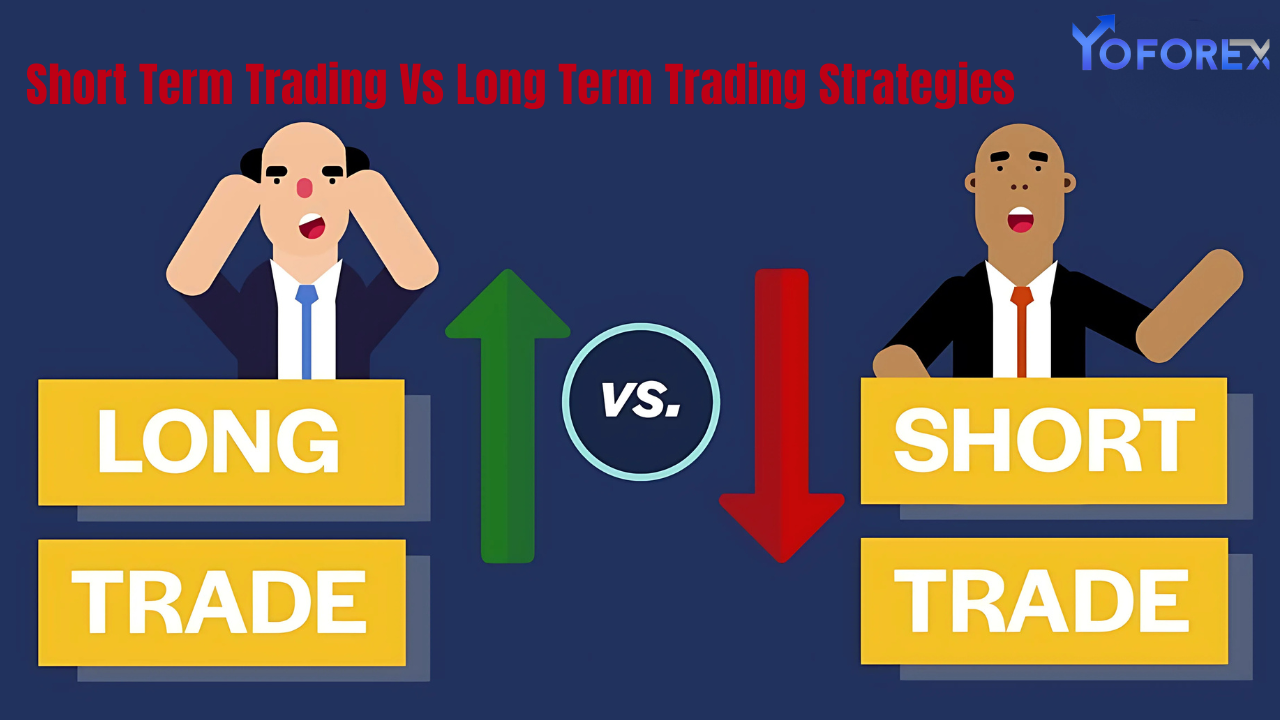Trading in the financial markets offers diverse opportunities, with strategies ranging from long-term investments to rapid short-term trades. Each approach has its unique advantages, challenges, and suitability depending on your goals, personality, and resources. Choosing between long-term and short-term trading is a critical decision that can shape your trading journey. In this blog, we’ll explore the key differences, benefits, and considerations to help you decide which approach aligns with your needs.
Understanding Long-Term Trading
Long-term trading, often referred to as investing, involves holding positions for months or years. This strategy focuses on capturing significant market trends and taking advantage of compounding growth over time.
Key Features:
- Time Horizon: Trades are held for extended periods, often based on fundamental analysis.
- Goals: Focuses on building wealth over the long term rather than immediate gains.
- Risk Management: Relies on broader market trends to mitigate short-term volatility.
Example:
- A trader buys shares of a company like Apple, expecting growth over several years based on strong fundamentals.

Understanding Short-Term Trading
Short-term trading, also known as active trading, involves holding positions for a few seconds, minutes, hours, or days. This approach aims to capitalize on short-term price fluctuations in the market.
Key Features:
- Time Horizon: Positions are closed within days, hours, or even minutes.
- Goals: Focuses on quick profits from short-term market movements.
- Risk Management: Requires constant monitoring to manage rapid price changes.
Example:
- A day trader buys and sells EUR/USD within a single trading session to profit from small price changes.
Key Differences Between Long-Term and Short-Term Trading
| Aspect | Long-Term Trading | Short-Term Trading |
|---|---|---|
| Time Commitment | Minimal; periodic portfolio reviews. | High; requires daily or hourly monitoring. |
| Stress Level | Lower, due to focus on big-picture trends. | Higher, with frequent decisions and volatility. |
| Capital Requirements | Flexible; suitable for small or large capital. | Higher for frequent transactions and margin trading. |
| Risk | Moderate; short-term volatility is less impactful. | High; prone to rapid market fluctuations. |
| Strategy Complexity | Relatively simple; based on fundamentals. | Complex; relies on technical analysis and quick execution. |
Benefits of Long-Term Trading
Long-term trading offers several advantages, particularly for those looking to grow wealth steadily over time.
- Lower Stress: With fewer trades and a focus on the long-term picture, traders experience less emotional strain.
- Time Efficiency: Requires minimal day-to-day involvement, making it ideal for those with full-time jobs.
- Compounding Growth: Allows investors to benefit from the power of compounding returns over time.
- Tax Advantages: Long-term investments often qualify for lower capital gains taxes in many jurisdictions.
- Fundamental Focus: Emphasizes company or economic fundamentals, reducing reliance on market timing.
Challenges of Long-Term Trading
While beneficial, long-term trading isn’t without its drawbacks:
- Patience Required: Results take time, and short-term losses can test your resolve.
- Market Risk: Extended market downturns can erode portfolio value.
- Less Flexibility: Capital is tied up for longer periods, limiting liquidity.
Benefits of Short-Term Trading
Short-term trading appeals to those who thrive on fast-paced decision-making and immediate results.
- Quick Profits: Provides opportunities to capitalize on frequent market fluctuations.
- Dynamic Strategy: Allows traders to adapt quickly to market conditions.
- High Liquidity: Positions are closed quickly, ensuring capital isn’t tied up.
- Skill Development: Traders refine analytical and decision-making skills rapidly.
Challenges of Short-Term Trading
Short-term trading can be rewarding but comes with significant challenges:
- High Stress: Constant monitoring and rapid decisions can be overwhelming.
- Transaction Costs: Frequent trades incur higher brokerage fees and spreads.
- Greater Risk: Short-term price volatility increases the likelihood of losses.
- Time-Consuming: Requires significant time commitment and focus.
Factors to Consider When Choosing Your Trading Style
To determine whether long-term or short-term trading is right for you, consider the following factors:
- Goals:
- Are you seeking steady wealth accumulation (long-term) or quick profits (short-term)?
- Risk Tolerance:
- Long-term trading involves moderate risk, while short-term trading carries higher risk and potential for losses.
- Time Availability:
- Full-time professionals may find long-term trading more manageable, while those with flexible schedules can explore short-term strategies.
- Capital:
- Short-term trading often requires more capital due to higher transaction costs and potential margin requirements.
- Personality:
- Are you patient and methodical (long-term) or quick-thinking and adaptable (short-term)?
Combining Both Approaches
Many traders find success by blending long-term and short-term strategies. For example:
- Core Portfolio: Allocate a significant portion of your capital to long-term investments in stable assets like blue-chip stocks or ETFs.
- Active Trades: Use a smaller portion for short-term opportunities, such as forex trading or day trading volatile stocks.
This hybrid approach allows you to benefit from both steady growth and immediate opportunities.
Tips for Success in Long-Term Trading
- Focus on Fundamentals: Analyze a company’s financial health, industry position, and growth potential.
- Diversify: Spread your investments across sectors and asset classes to reduce risk.
- Stay Patient: Avoid reacting to short-term market noise.
- Review Regularly: Periodically assess your portfolio to ensure it aligns with your goals.
Tips for Success in Short-Term Trading
- Master Technical Analysis: Use tools like moving averages, RSI, and candlestick patterns to identify entry and exit points.
- Set Clear Goals: Define your profit targets and stop-loss levels for each trade.
- Control Emotions: Avoid impulsive decisions driven by fear or greed.
- Monitor Markets: Stay updated on economic events, news, and market trends.
Conclusion
Long-term and short-term trading are two distinct approaches, each with its own set of advantages and challenges. The right choice depends on your financial goals, risk tolerance, time commitment, and personality. By understanding the nuances of each style and considering a hybrid approach, you can tailor your trading strategy to achieve success in the financial markets. Remember, consistency and discipline are key, regardless of your chosen path.

